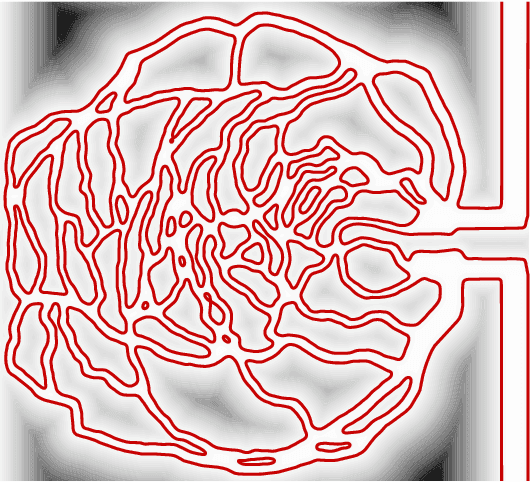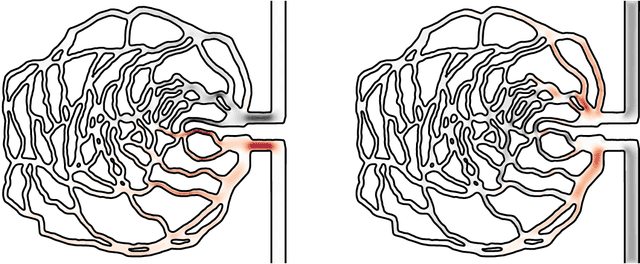Sergey Litvinov
Path planning of magnetic microswimmers in high-fidelity simulations of capillaries with deep reinforcement learning
Mar 29, 2024



Abstract:Biomedical applications such as targeted drug delivery, microsurgery or sensing rely on reaching precise areas within the body in a minimally invasive way. Artificial bacterial flagella (ABFs) have emerged as potential tools for this task by navigating through the circulatory system. While the control and swimming characteristics of ABFs is understood in simple scenarios, their behavior within the bloodstream remains unclear. We conduct simulations of ABFs evolving in the complex capillary networks found in the human retina. The ABF is robustly guided to a prescribed target by a reinforcement learning agent previously trained on a reduced order model.
A Learnable Prior Improves Inverse Tumor Growth Modeling
Mar 07, 2024



Abstract:Biophysical modeling, particularly involving partial differential equations (PDEs), offers significant potential for tailoring disease treatment protocols to individual patients. However, the inverse problem-solving aspect of these models presents a substantial challenge, either due to the high computational requirements of model-based approaches or the limited robustness of deep learning (DL) methods. We propose a novel framework that leverages the unique strengths of both approaches in a synergistic manner. Our method incorporates a DL ensemble for initial parameter estimation, facilitating efficient downstream evolutionary sampling initialized with this DL-based prior. We showcase the effectiveness of integrating a rapid deep-learning algorithm with a high-precision evolution strategy in estimating brain tumor cell concentrations from magnetic resonance images. The DL-Prior plays a pivotal role, significantly constraining the effective sampling-parameter space. This reduction results in a fivefold convergence acceleration and a Dice-score of 95%
 Add to Chrome
Add to Chrome Add to Firefox
Add to Firefox Add to Edge
Add to Edge